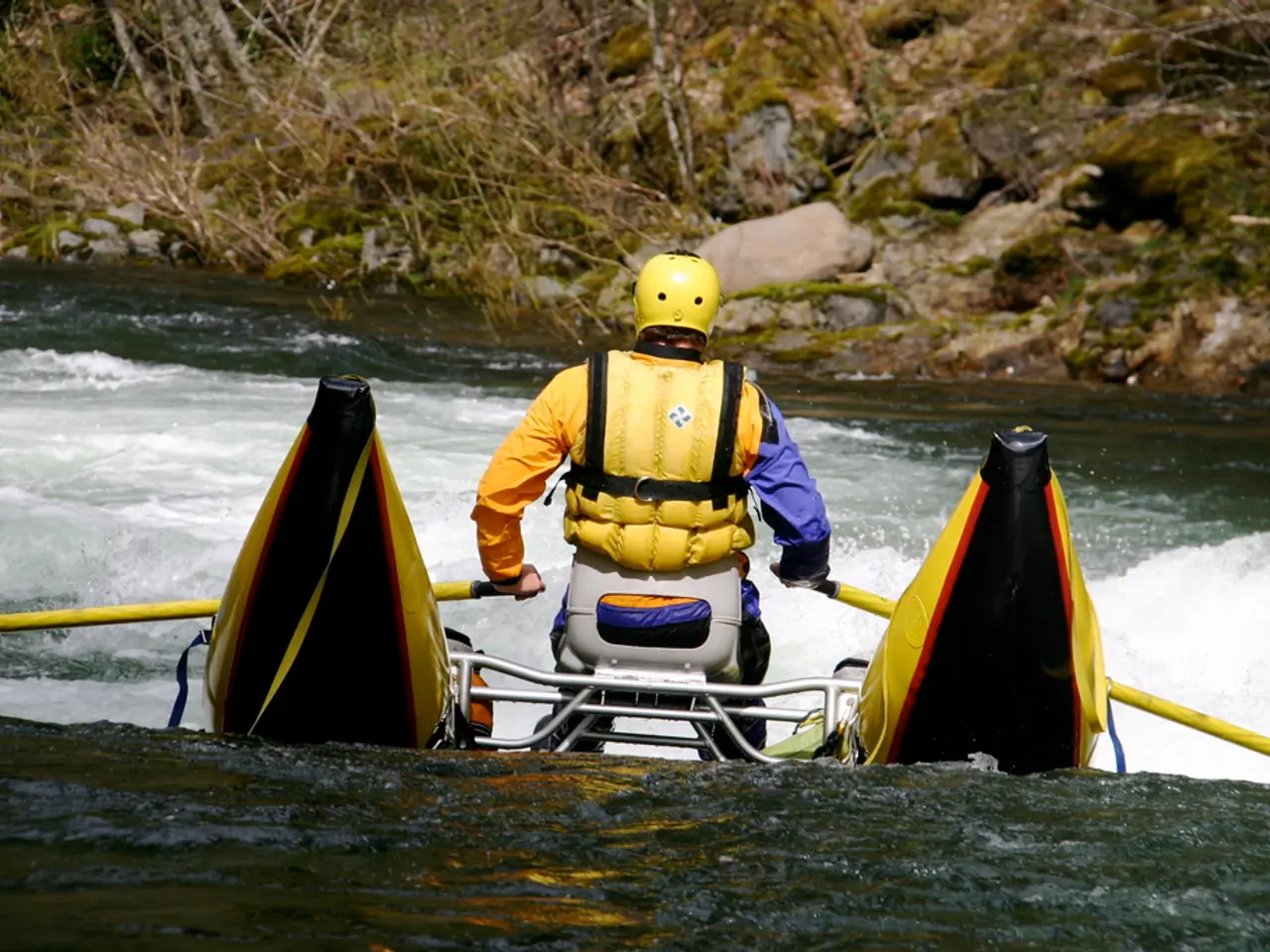Water Rescue Incident in Pinawa Emphasizes Safety Awareness: First Responders Highlight Vigilance
In a dramatic rescue operation over the weekend, five adults were safely brought to shore near Pinawa, Manitoba, after finding themselves in trouble in the swift-moving Pinawa Channel. The incident highlights the importance of safety precautions, particularly for non-swimmers, in such waterways.
Mike Purtill, the chief of the Pinawa Fire and Rescue Service, led the rescue operations. He emphasizes the significance of safety precautions, especially for those who are not strong swimmers.
The five adults were standing in waist-deep water on flotation devices in the Pinawa Channel. However, the current overwhelmed them, leading them to call 911 for help. Unfortunately, none of the adults were wearing lifejackets at the time.
Purtill advises that when using flotation devices in swift waterways, particularly for non-swimmers, key safety precautions include wearing a properly fitting, Coast Guard or Transport Canada approved personal flotation device (PFD) at all times. The device should keep the chin above water and allow easy breathing, and inflatable PFDs should be avoided for non-swimmers due to reliability issues in fast water.
Additional precautions include selecting PFDs with appropriate buoyancy levels and safety features, confirming the PFD fits snugly before entering the water, practicing self-rescue techniques, ensuring all passengers have assigned, correctly sized life jackets that are accessible and adjusted properly before departure, using additional safety equipment nearby, and avoiding PFDs that have been altered or crushed by heavy objects.
Purtill also encourages familiarity with the Pinawa Channel's waterway. He stresses that the Pinawa Channel, while a popular recreational spot, is a swift-moving waterway that requires understanding before use. There are few areas along the Pinawa Channel where one can get off the water, and the rescue took place in an isolated area with no way out of the water.
Purtill recommends always wearing a lifejacket while in the water. He advises people to assess their swimming skills before venturing into the water, as the Pinawa Channel has sections that can be swift, posing a challenge for inexperienced swimmers. The Pinawa Channel's float channel lasts for approximately three kilometers.
This incident serves as a reminder of the importance of safety precautions when engaging in water activities, particularly for non-swimmers. By following these precautions, the risk of drowning and injury in swift water environments can be significantly reduced.
- Mike Purtill, chief of the Pinawa Fire and Rescue Service, notes the importance of wearing a properly fitting personal flotation device (PFD) when using flotation devices in swift waterways, especially for non-swimmers, to increase safety and prevent drowning incidents.
- In light of the recent incident, it's crucial for those participating in water activities, particularly non-swimmers, to be aware of safety precautions such as using appropriate buoyancy level PFDs, practicing self-rescue techniques, and familiarizing themselves with the Pinawa Channel's unique challenges to reduce the risk of accidents in swift water environments.







